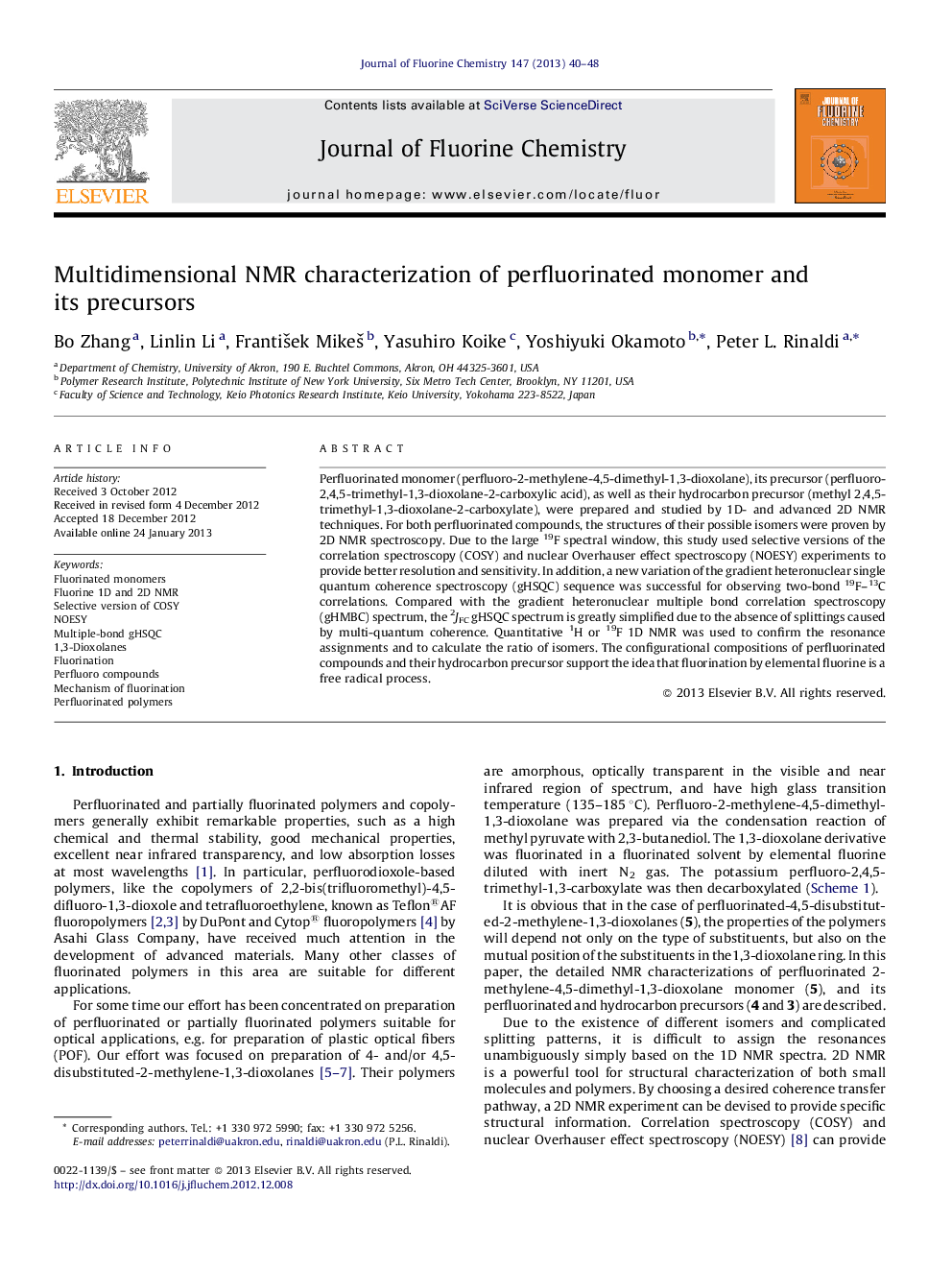| Article ID | Journal | Published Year | Pages | File Type |
|---|---|---|---|---|
| 1314001 | Journal of Fluorine Chemistry | 2013 | 9 Pages |
Perfluorinated monomer (perfluoro-2-methylene-4,5-dimethyl-1,3-dioxolane), its precursor (perfluoro-2,4,5-trimethyl-1,3-dioxolane-2-carboxylic acid), as well as their hydrocarbon precursor (methyl 2,4,5-trimethyl-1,3-dioxolane-2-carboxylate), were prepared and studied by 1D- and advanced 2D NMR techniques. For both perfluorinated compounds, the structures of their possible isomers were proven by 2D NMR spectroscopy. Due to the large 19F spectral window, this study used selective versions of the correlation spectroscopy (COSY) and nuclear Overhauser effect spectroscopy (NOESY) experiments to provide better resolution and sensitivity. In addition, a new variation of the gradient heteronuclear single quantum coherence spectroscopy (gHSQC) sequence was successful for observing two-bond 19F13C correlations. Compared with the gradient heteronuclear multiple bond correlation spectroscopy (gHMBC) spectrum, the 2JFC gHSQC spectrum is greatly simplified due to the absence of splittings caused by multi-quantum coherence. Quantitative 1H or 19F 1D NMR was used to confirm the resonance assignments and to calculate the ratio of isomers. The configurational compositions of perfluorinated compounds and their hydrocarbon precursor support the idea that fluorination by elemental fluorine is a free radical process.
Graphical abstractPerfluorinated monomer and its precursors are studied by performing 2D NMR experiments to prove structure and resonance assignments.Figure optionsDownload full-size imageDownload as PowerPoint slideHighlights► Selective COSY and NOESY were used to study perfluorinated monomer and its precursors. ► Modified gHSQC 2D NMR was used to give two-bond 19F13C correlations. ► Quantitative 1H or 19F 1D NMR experiments were conducted to calculate the isomer ratios.
